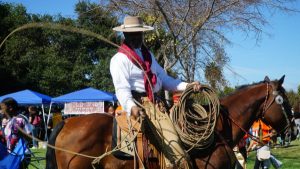Arts and Culture
Bay Area Artist, Peace Activist Lewis Suzuki, 95
Courtesy of Rafu
Noted artist and peace activist Iwao Lewis Suzuki passed away recently at the age of 95.
“With more than 30 family, friends, and family of friends in attendance, we had four services at his home in Berkeley, Calif., where he died,” his son Masao said in a Facebook post. “The first was a Japanese American Buddhist (Jodo Shinshu) service, the second was the singing of the ‘Internationale’ in Tagalog and English, the third was a Vietnamese service, and finally a Catholic rosary, reflecting the beliefs of his friends and family.”

An important figure in the watercolor movement known as the “California Style,” Suzuki once said, “I feel that art has a place in enriching the life of humanity … Through my art, I try to strengthen that part of culture. And I feel that the arts should project the future of human society. To me, it cannot be non-objective or abstract in that sense.”
Suzuki’s father initially entered San Francisco in 1912 by jumping ship, after which he made his way to Los Angeles and supported himself as a musician. Eventually returning to Japan and marrying, he and his wife moved to Los Angeles, where he opened a dry-cleaning business, and where Lewis was born on Nov. 29, 1920.
In 1929, Suzuki’s father died, and his mother returned to Japan with her six children. There, Suzuki excelled in the art programs in his primary school, attended Kawabata Art Academy in Tokyo, and began exploring the possibility of studying art in the U.S.
In 1939, a fellow passenger on a commuter train saw him looking at a catalog of American art schools, and upon learning that Suzuki had been born in the U.S., strongly suggested that he leave Japan immediately.
Suzuki later recalled that the man showed him photos of the atrocities committed by the Japanese in Nanking, and warned that if Suzuki stayed in Japan he would be forced to join the military and participate in such acts.
He gave Suzuki the name of a man to contact in Los Angeles, which Suzuki did when he returned to California later that year.
The man, Edo Mita, helped him get settled in Los Angeles, where Suzuki completed high school, took classes at Otis Art Institute, and worked as a houseboy.
Edo invited Suzuki to Marxist study groups at his house frequented by Japanese members of the film industry who discussed their concerns of Japan’s growing militarism.
After the U.S. declared war on Japan, he joined the army and taught Japanese at the Military Intelligence Service Language School in Minnesota.
Suzuki became politically active in issues of peace and justice, and believed in the role of art in furthering these causes. He traveled to Hiroshima, which had been devastated by an atomic bomb, and would later create a graphic work, “No More Hiroshimas,” and other peace posters for the American Friends Service Committee.
In 1952, Suzuki traveled to China with the American Peace Crusade and met his future wife, Mary Bonzo, an American citizen who had grown up in the Philippines and was in China with a Quaker group.
The couple married and settled in Berkeley, where Mary was attending school. Suzuki worked as a cabinet-maker while also painting, teaching and exhibiting.
Eventually, he was able to make art full-time.
He was a member of the politically active Graphic Arts Workshop from 1953 to 1963 ad was also a participant in many art fairs held throughout the state.
Shows at shopping malls and parks, he said, were a way to connect with people who may not visit a gallery or have a strong knowledge of art.
Working primarily in watercolors, his works were loosely painted, brightly colored still lifes, landscapes, seascapes and city scenes. A trip to Manila in 1986 prompted him to paint “Smokey Mountain,” which depicts the dire conditions of the community that existed on the city’s landfill.
Suzuki’s bold and imaginative use of color won him numerous awards, including two at the Society of Western Artists show at the De Young Museum in San Francisco.
He served on the Berkeley Art Commission and was recognized by the City of Berkeley in 2010. Until recently, he continued to work at his studio on Grant Street in Berkeley, participating in such events as East Bay Open Studios and Berkeley Artisans Holiday Open Studios.
As a peace activist, he was a delegate to the Asian Pacific Peace Conference in Beijing and to the World Peace Conference in Vienna.
In 2011, Suzuki was inducted into the Community Hall of Fame at La Peña Cultural Center in Berkeley. A the event, he said, “We are the richest country in the world, but there are many people who can’t get health care or who can’t afford to pay for college … Let’s get out of Iraq and Afghanistan. One day we will have peace, where U.S. troops are not overseas and we can have freedom throughout the world.”
Survivors include his son Masao and his daughter Fumi.
Arts and Culture
Kedrick Armstrong: New Music Director for the Oakland Symphony
The Oakland Symphony Announced Kedrick Armstrong as its Next Music Director. In addition to conducting the orchestra’s public concerts, Armstrong will also actively participate in the Oakland Symphony’s many education and community engagement programs, designed to inspire a love of music in people of all ages.
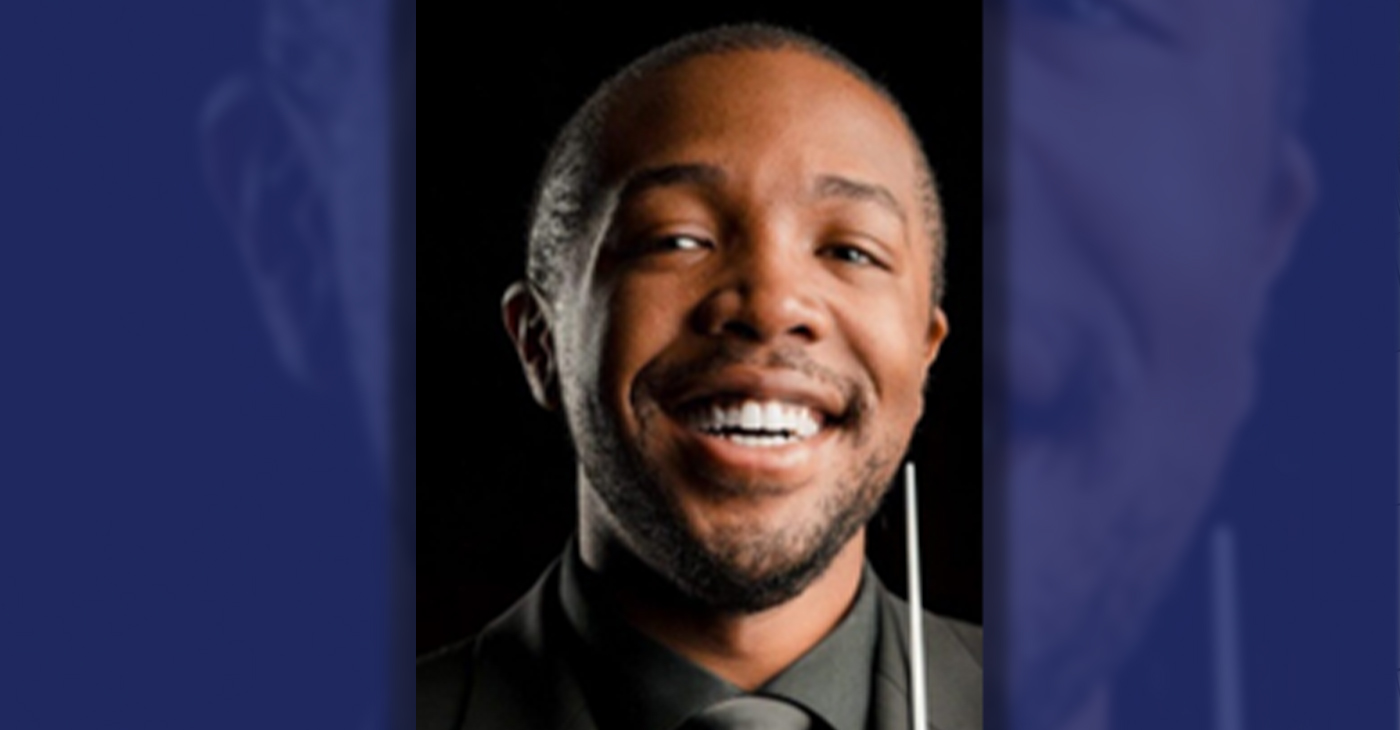
By Post Staff
The Oakland Symphony Announced Kedrick Armstrong as its Next Music Director.
In addition to conducting the orchestra’s public concerts, Armstrong will also actively participate in the Oakland Symphony’s many education and community engagement programs, designed to inspire a love of music in people of all ages.
Armstrong is the successor to previous music director and Conductor Michael Morgan, who passed away in 2021 after a 30-year tenure at the Symphony.
Armstrong will open the Oakland Symphony 2024-2025 season on October 18.
Armstrong, who is 29 and hails from Georgetown, South Carolina, is currently the creative partner and principal conductor of the Knox-Galesburg Symphony.
The Chicago Tribune has praised Armstrong for his ability to “simply let the score speak for itself.” He enjoys a wide range of repertoire, spanning early music to premiering new works, using his joy and curiosity for all music to cultivate understanding and collaboration within diverse communities.
“I am deeply honored and grateful for the opportunity to serve as the new music director of the Oakland Symphony,” Armstrong said. “As a Black conductor, I find it humbling to stand on the shoulders of both Michael Morgan and Calvin Simmons,” the most recent and the first African American music directors of the Symphony, respectively.
Armstrong led three programs at the Symphony between 2022 and early 2024, which showcased his broad knowledge of the classical repertoire and enthusiasm for spotlighting diverse voices.
On his Oakland Symphony subscription debut on Feb. 16, Armstrong led the world premiere of “Here I Stand: Paul Robeson,” an oratorio by Carlos Simon on a libretto by Dan Harder, commissioned by the Oakland Symphony.
Armstrong was selected unanimously by the Oakland Symphony’s board of directors and musicians after an extensive two-year search. “The search committee was overwhelmed by Kedrick’s scholarship and curiosity about all kinds of music, from classical and jazz to gospel and hip-hop,” said. Dr. Mieko Hatano, executive director of the Oakland Symphony. “We are thrilled to have him join us at the Oakland Symphony.”
Arts and Culture
Faces Around the Bay Dr. Carl Blake, Pianist
Born in Liberty, Missouri, Carl Blake, a virtuoso and respected pianist, made his most recent migration to the East Bay in 1999. One might have seen him performing recently at Noontime Concerts in San Francisco, or at the Piedmont Center for the Arts in Oakland. He is Director of Music at The Church for the Fellowship of All Peoples in San Francisco. He was also co-organizer and collaborative pianist at Herbst Theater for The Majesty of the Spirituals concert in 2022 and has held several church positions in the Bay Area.
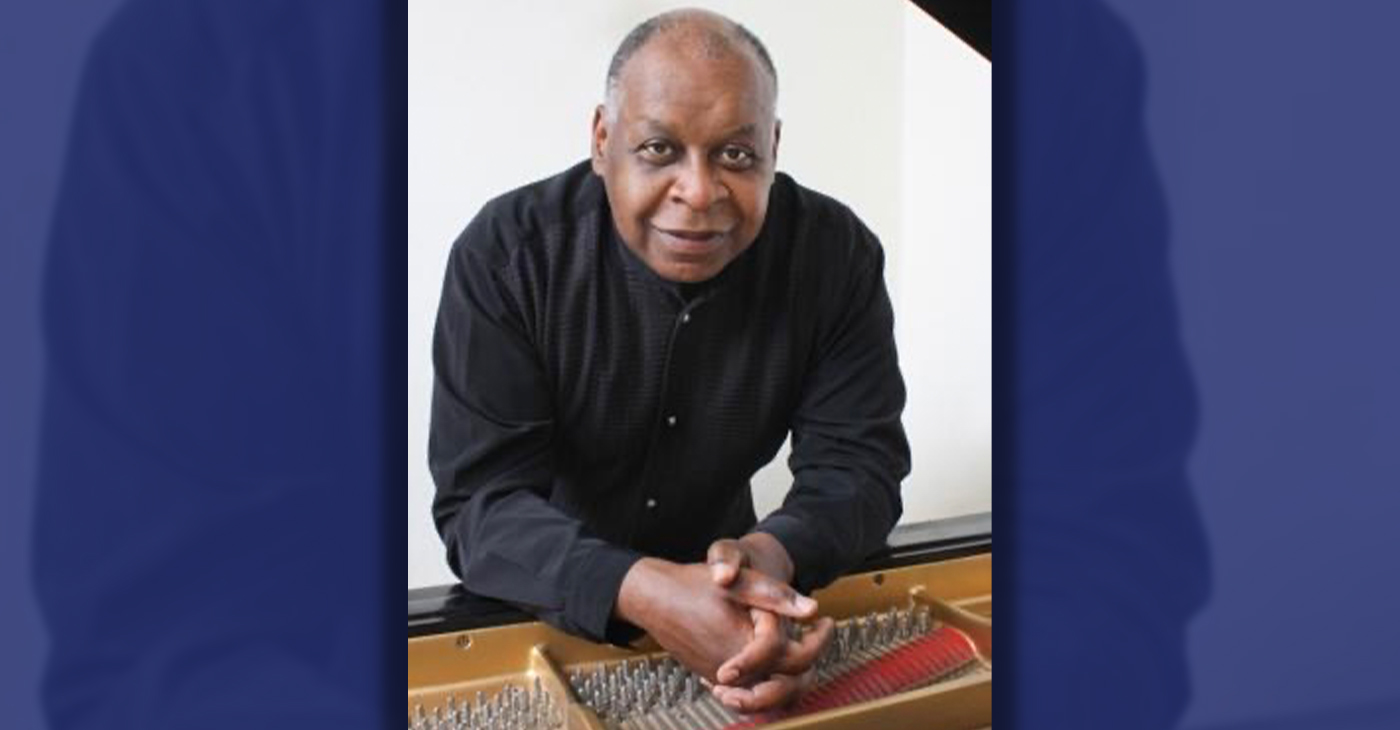
By Barbara Fluhrer
Born in Liberty, Missouri, Carl Blake, a virtuoso and respected pianist, made his most recent migration to the East Bay in 1999.
One might have seen him performing recently at Noontime Concerts in San Francisco, or at the Piedmont Center for the Arts in Oakland. He is Director of Music at The Church for the Fellowship of All Peoples in San Francisco. He was also co-organizer and collaborative pianist at Herbst Theater for The Majesty of the Spirituals concert in 2022 and has held several church positions in the Bay Area.
Blake obtained a Bachelor of Music from Boston University and continued post-baccalaureate studies in Jamaica before earning a Master of Arts in Music at San Jose State University. He was the recipient of two Fulbright residencies in Honduras and completed a third residency at the University of St. Petersburg in Russia. He has a Doctor of Musical Arts from Cornell University.
At age 19, Blake, then an undergraduate piano major at Boston University, was “discovered” by Impresario Dr. W. Hazaiah Williams, who is the Founder and Director of Today’s Artists/Four Seasons Arts.
Williams honored Blake by awarding him the first Marian Anderson Young Artist Award. Anderson personally presented the award at the Masonic Auditorium in S.F. Subsequently, Blake was presented by Dr. Williams in his San Francisco debut at The Herbst Theatre. Williams subsidized a year of study abroad for Blake at the Paris Conservatory of Music. Additionally, Williams sponsored Blake’s New York Weill Hall debut, where he has performed twice since. Blake performed several times at the Yachats Music Festival in Oregon.
Blake continues to perform nationally and abroad. His hobbies are reading, baking and travel. He says, “I’m still pumping ivories, as Belgian pianist Jeanne Stark described the disciplined practice of concert piano.”
Arts and Culture
Oakland Jazz Great Offers Master Class as City Declares “John Handy Day”
World-renowned jazz master saxophonist John Handy, a McClymond’s High School graduate, was presented with a Mayor of Oakland Proclamation declaring Feb. 12, as John Handy Day in the city. Handy is most notably known as the featured saxophonist for Charles Mingus on “Goodbye Pork Pie Hat” from the album “Mingus Ah Um” (1959) and on “Hard Work” from his own album “Hard Work” (1976).
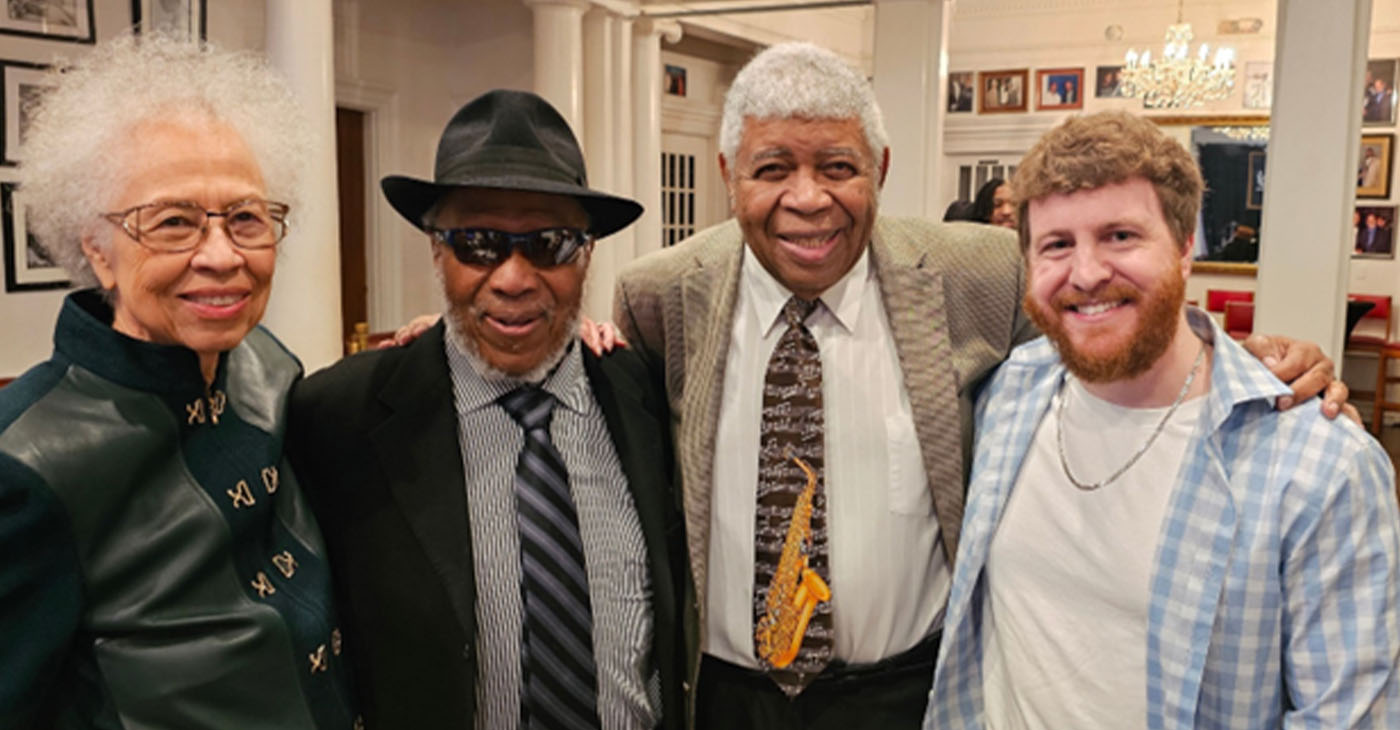
By Conway Jones
World-renowned jazz master saxophonist John Handy, a McClymond’s High School graduate, was presented with a Mayor of Oakland Proclamation declaring Feb. 12, as John Handy Day in the city.
Handy is most notably known as the featured saxophonist for Charles Mingus on “Goodbye Pork Pie Hat” from the album “Mingus Ah Um” (1959) and on “Hard Work” from his own album “Hard Work” (1976).
“John Handy is a jazz icon and an inspiration to musicians everywhere,” said Ayo Brame, a 16-year-old Oakland tenor saxophone player who is enrolled at the Oakland School for the Arts.
In celebration of this day, the reception in downtown Oakland at Geoffrey’s Inner Circle was a gathering of artists, young and old, coming together in his honor and celebrating his 91st birthday.
Handy presented a Saxophone Colossus free masterclass for musicians. This class afforded a rare opportunity to learn about the saxophone from an aficionado. The class was free and open to all – saxophonists, vocalists, aficionados, students, and casual listeners.
“As a longtime friend for over 60 years, and fellow musician who has had numerous opportunities to share the stage with John, it has always been a pleasure performing with him and hearing his creative interpretations of the music and his gift of ease inspiring the next generation of jazz musicians,” said Roger Glenn, a multi-instrumentalist.
-

 Community2 weeks ago
Community2 weeks agoFinancial Assistance Bill for Descendants of Enslaved Persons to Help Them Purchase, Own, or Maintain a Home
-

 Activism3 weeks ago
Activism3 weeks agoOakland Post: Week of April 3 – 6, 2024
-

 Business2 weeks ago
Business2 weeks agoV.P. Kamala Harris: Americans With Criminal Records Will Soon Be Eligible for SBA Loans
-

 Activism2 weeks ago
Activism2 weeks agoOakland Post: Week of April 10 – 16, 2024
-

 Community2 weeks ago
Community2 weeks agoAG Bonta Says Oakland School Leaders Should Comply with State Laws to Avoid ‘Disparate Harm’ When Closing or Merging Schools
-

 Community1 week ago
Community1 week agoOakland WNBA Player to be Inducted Into Hall of Fame
-
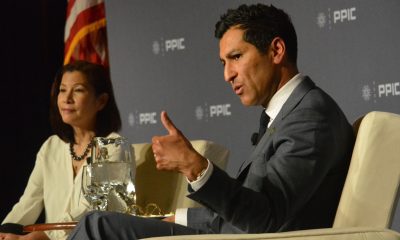
 Community2 weeks ago
Community2 weeks agoThe Year Ahead: Assembly Speaker Rivas Discusses Priorities, Problems
-

 City Government2 weeks ago
City Government2 weeks agoLAO Releases Report on Racial and Ethnic Disparities in California Child Welfare System


